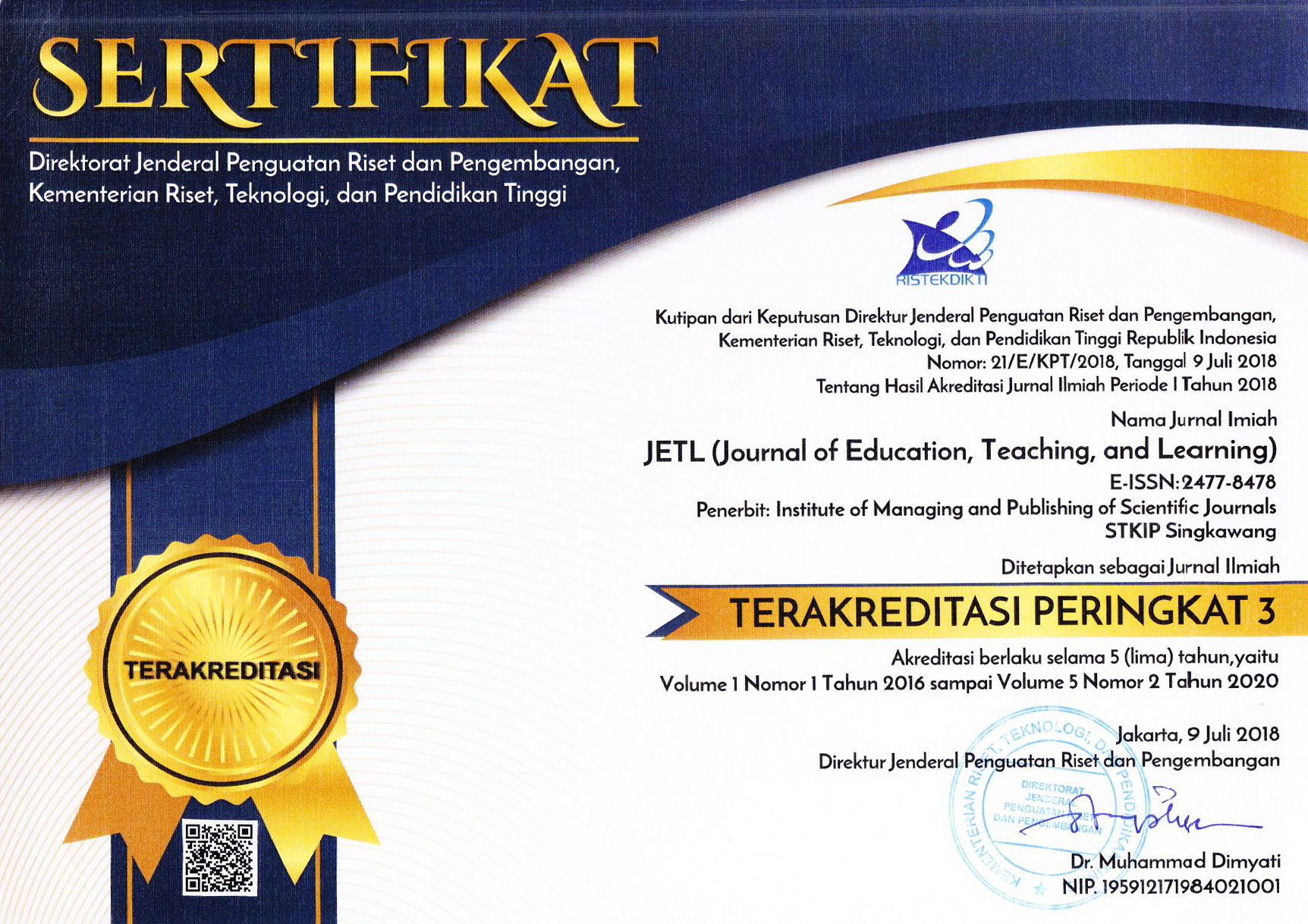AN INTRODUCTION: EVALUATION OF QUALITY ASSURANCE FOR HIGHER EDUCATIONAL INSTITUTIONS USING RASCH MODEL
Abstract
Full Text:
PDFReferences
Straw, R.B. and Herrell, J.M. (2002). A Framework for Understanding and Improving Multi – Site Evaluation. New Directions for Evaluation, 94: 5 – 15.
ESIB, The National Unions of Students of Europe, "European Student Handbook on Quality Assurance in Higher Education", 2002.
Ferreira, "Chapter4: Quality Models in the Higher Education Sector", University of Pretoria etd, Vol 14 NO 2 2000:182, 2003.
G.Srikanthan, "Developing a Model for Quality in Higher Education", Centre for Management Quality Research, 2002.
EPA "Data Quality Assessment: A Reviewer’s Guide", EPA QA/G-9R,United States,Environmental Protection Agency, Office of Environmental Information, Washington, DC 20460,
February 2006.
Rasch, G. (1960). Probabilistic models for some intelligence and attainment tests. Chicago: University of Chicago Press.
Andrich, D. (1978). Rating formulation for ordered response categories. Psychometrika, 43, 561–573.
Guttman, L. A. (1950). The basis for Scalogram analysis. In S. A. Stouffer, L. A. Guttman, F. A. Suchman, P. F. Lazarsfeld, S. A. Star, & J. A. Clausen (Eds.), Studies in social psychology in World War II: Vol 4. Measurement and prediction (pp. 60–90). Princeton: Princeton
University Press
Smith, R. M. (2000). Fit analysis in latent trait measurement models. Journal of Applied Measurement, 2, 199–218.
Masters, G. (1982). A Rasch model for partial credit scoring. Psychometrika, 47, 149–174.
Holland, P. W., & Wainer, H. (1993). Differential item functioning. Hilldale, NJ: Lawrence Erlbaum Associates
Julie F. Pallant and Alan Tennant. (2007). An introduction to the Rasch measurement model: An example using the Hospital Anxiety and Depression Scale (HADS). British Journal of Clinical Psychology, 46, 1–18.
Kotler P, Keller KL. Marketing management. Edisi ke-14. New Jersey: Pearson Education Inc; 2012
DOI: http://dx.doi.org/10.26737/jetl.v1i1.25
Refbacks
- There are currently no refbacks.

This work is licensed under a Creative Commons Attribution-NonCommercial 4.0 International License.
Published by:
Institute of Managing and Publishing of Scientific Journals STKIP Singkawang
Sekolah Tinggi Keguruan dan Ilmu Pendidikan (STKIP) Singkawang
Address : STKIP Singkawang, Jalan STKIP - Kelurahan Naram Singkawang, Kalimantan Barat, INDONESIA, 79251
No. Telp. : +62562 420 0344
No. Fax. : +62562 420 0584
JETL (Journal of Education, Teaching, and Learning)
e-ISSN : 2477-8478
p-ISSN : 2477-5924

Editor in Chief Contact: [email protected] / Wa: +6282142072788
Publisher Contact: [email protected] / Wa: +6282142072788
Management Tools
JETL Indexed by:
JETL (Journal of Education, Teaching, and Learning) is licensed under a Creative Commons Attribution-NonCommercial 4.0 International License.











